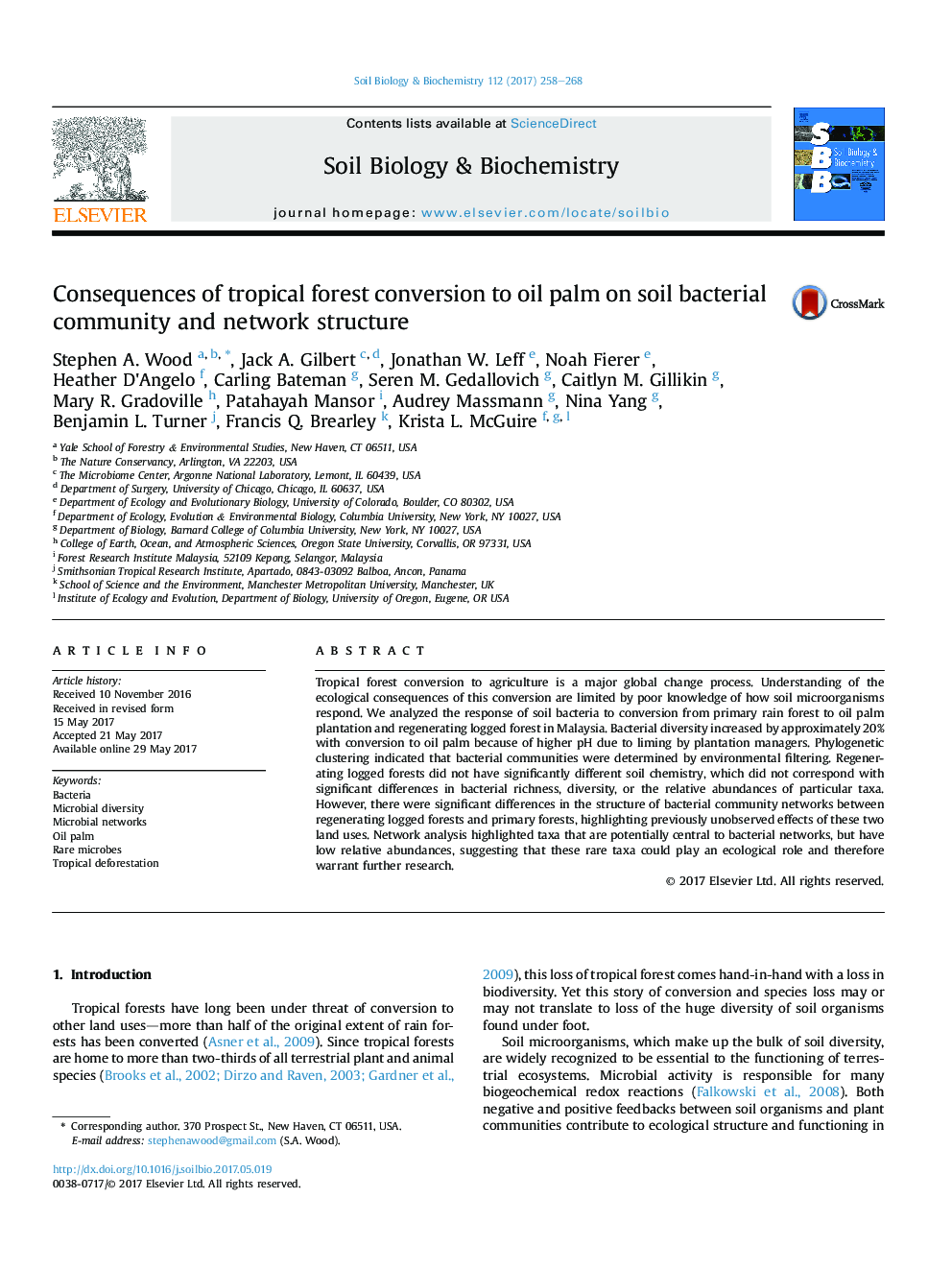| Article ID | Journal | Published Year | Pages | File Type |
|---|---|---|---|---|
| 5516355 | Soil Biology and Biochemistry | 2017 | 11 Pages |
•Soil bacterial diversity was highest on oil palm plantations.•No difference in diversity between secondary and primary forest.•Network structure differs significantly among all three land cover types.•Rare, under-researched bacteria are central to network structure.
Tropical forest conversion to agriculture is a major global change process. Understanding of the ecological consequences of this conversion are limited by poor knowledge of how soil microorganisms respond. We analyzed the response of soil bacteria to conversion from primary rain forest to oil palm plantation and regenerating logged forest in Malaysia. Bacterial diversity increased by approximately 20% with conversion to oil palm because of higher pH due to liming by plantation managers. Phylogenetic clustering indicated that bacterial communities were determined by environmental filtering. Regenerating logged forests did not have significantly different soil chemistry, which did not correspond with significant differences in bacterial richness, diversity, or the relative abundances of particular taxa. However, there were significant differences in the structure of bacterial community networks between regenerating logged forests and primary forests, highlighting previously unobserved effects of these two land uses. Network analysis highlighted taxa that are potentially central to bacterial networks, but have low relative abundances, suggesting that these rare taxa could play an ecological role and therefore warrant further research.
